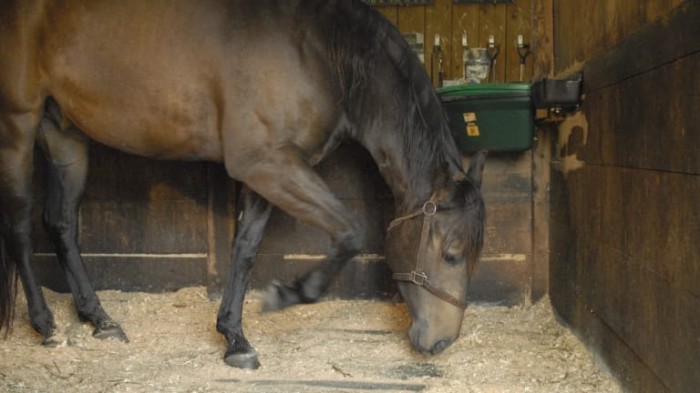
Reducing pawing in horses using positive reinforcement
In 10% to 40% of stabled horses pawing is observed. Pawing is the stomping, scraping or dragging of the front hooves on the ground.
Pawing is undesirable because it can afflict injuries to the horse as well as humans. Next to that, the horse can damage equipment and disturb its training. For example, high rates of pawing can results in the loosening and wearing out of horseshoes and damage hooves. Aversive methods are the most widely used to control this behaviour in horses, sometimes successfully. However, aversive methods also can result in unwanted side effects such as the horse avoiding interaction, learned helplessness and potential abuse as the magnitude and intensity of aversive stimuli are increased to maintain its effectiveness. In this study the possibilities of using positive reinforcement to reduce pawing were investigated.
The study was executed by using differential reinforcement of other behaviour (DRO) schedules to reduce pawing in three horses. A DRO consisted of an interval of a pre-determined time. If the horse did not paw during this time, it would receive a reward.
The results suggested that DRO schedules were effective at reducing pawing. However, between horse differences in sensitivity to the DRO schedule and the efficacy of the reinforcer may be important considerations.
Expert opinion by Anouk van Breukelen
This study provides a foundation for future research on the efficacy of using positive reinforcement in reducing stereotypic behaviours. This foundation should be further validated by applying it to a bigger group of horses.
> From: Fox et al., Journal of Applied Animal Behavior Analysis 48 (2015) 936-940. All rights reserved to the Society for the Experimental Analysis of Behavior. Click here for the online summary.


